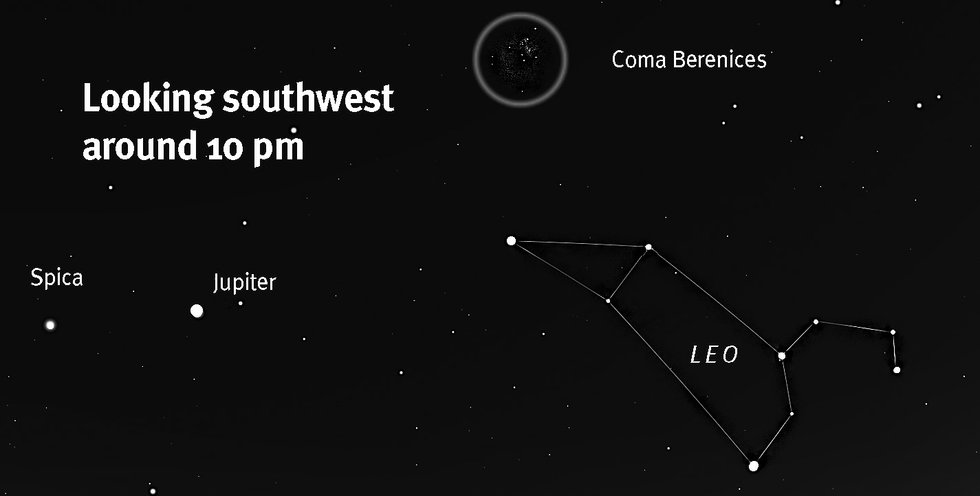
Saturn reached opposition, its closest point to earth, on June 15. The ringed planet now glows in the sky from dusk until dawn giving viewers lots of time to look at it. Right now Saturn is tilted at an angle that provides a great look at its ring system for telescope viewers. However, binoculars will reveal Titan, Saturn’s largest moon and also the largest moon in our solar system, as a tiny star next to the planet.
Visible until November, Saturn glows with a golden hue in the southeast at nightfall now, to the upper left of the reddish star Antares in the constellation Scorpius. The three stars to the upper right of Antares form the head of the scorpion while Shaula, the “sting,” is found to the lower left of it. Check out this part of the sky with binoculars. M4, a globular cluster, is found to the right of Antares; it appears as a “fuzzy ball” with binoculars or a telescope.
Jupiter is the brilliant “star” in the southwestern sky after sunset now, with the bright star Spica to its left. Look to the right of Jupiter for Leo the Lion, distinct by its sickle, or backward question mark, shape in the west at dark. The triangle of stars between Jupiter and Leo’s sickle forms the lion’s hindquarters. Above it you’ll see a faint grouping of stars, the Coma Berenices, also known as the tuft of the lion’s tail. This is a spectacular sight with binoculars as dozens of stars pop into view.
Before dawn on June 20 and 21, early morning risers will see a waning crescent moon near the planet Venus over the eastern horizon. Venus shines so brilliantly that you’ll likely see it even as the sky turns blue around 5 am.
Happy summer! The Summer Solstice occurs this year on June 20 at precisely 10:24 am for Wisconsin. At this time the sun reaches its northernmost position for the year and this day is also the longest period of daylight for the year, as the north pole is titled toward the sun.
Oddly enough, the earliest and latest sunsets of the year don’t occur on this date. Instead the earliest sunrise is just before this date and the latest sunset a few days after the solstice. This happens because of a combination of the Earth’s tilt and its orbit being an ellipse, not a circle. Happy viewing.




